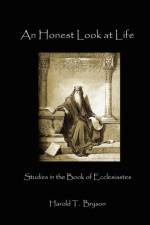von James C Taylor & Harold T Bryson
20,00 €
The origin of this book has kinship with the merging of two rivers. Two rivers existed side by side. One had flowed longer than the other river. It had received the water and rich deposits of rivers, creeks, and streams. The other river was formed later. The two rivers existed separately, but ultimately they merged. The water from the older river mixed with the younger river. Their waters became intermingled. As they flowed together, their waters blended thoroughly. Other tributaries flowed into the combined river, and this one river was filled with deposits from many sources. As the river flowed, it emptied its waters in a large gulf. If you looked at the river, you could not tell what water belonged to what river.This analogy fits the formation of this book. James C. Taylor resembles the description of the river which existed longer. He has been a pastor, a navy chaplain, and a seminary professor. He has taught preachers to build sermons for over three decades. Through these decades many streams of homiletical information flowed into his life and ministry -Charles W. Koller, George Buttrick, Andrew W. Blackwood, H. Grady Davis, John A. Broadus, Austin Phelps, Phillips Brooks, Halford Luccock, Ralph Sockman, and others. Students from several generations have learned from this teacher of preaching. They have observed the character of his life, and they have applied his techniques of building a sermon. Also, he has listened to their feedback; thus, he has been able to improve his content and method of teaching continuously.The other river in the analogy is Harold T. Bryson. His system of preaching was influenced by Taylor in an expository preaching class. Bryson listened to Taylor's theory of preaching and applied it in his student pastorate and in subsequent pastorates. He sought each week to build sermons with the idea of helping his people, according to the system shared by Taylor. Bryson served as a pastor for nineteen years. The mechanics of "building" a sermon to meet people's needs intrigued both men. Bryson, in the pastorate, and Taylor, in the seminary, shared ideas with each other. They listened to each other. They learned together about one system of building a sermon. They continuously insisted that the system of sermon construction must be subservient to helping people with their needs.



